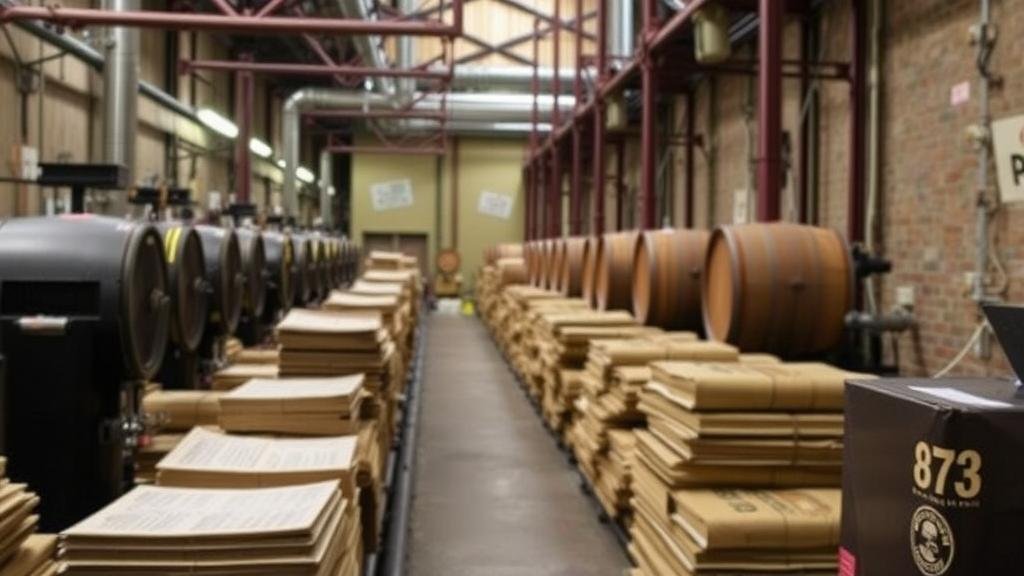Mining Historical Brewery Supply Chain Logs for Artifact Leads
Mining Historical Brewery Supply Chain Logs for Artifact Leads
The study of historical brewery supply chain logs offers a rich and often untapped source of information about the brewing industry, consumer habits, and cultural practices surrounding beer production and consumption. By examining these logs, researchers can uncover critical insights into the artifacts associated with brewing in various historical contexts. This paper explores the methodologies for analyzing supply chain logs, presents findings from specific case studies, and discusses implications for historical research.
Introduction
The rise of craft breweries in the 21st century has sparked renewed interest in the historical aspects of brewing. According to the Brewers Association, as of 2021, there were over 8,000 craft breweries operating in the United States alone, a significant increase from fewer than 100 in the 1980s. This burgeoning interest has led to a parallel examination of historical practices, particularly through the mining of supply chain logs from breweries that have operated in past centuries. These logs serve as records of transactions, ingredient sourcing, and production methods that can provide valuable leads to artifacts such as bottles, brewing equipment, and packaging materials.
Methodology
To analyze historical brewery supply chain logs, several methodological steps must be undertaken:
- Data Collection: Historical logs can be sourced from local archives, state historical societies, and university collections. Notable collections include the Pennsylvania Brewing Company records, which date back to the late 1800s.
- Data Analysis: Once collected, logs need to be digitized and organized chronologically. This allows researchers to trace specific products over time, identifying production spikes or declines associated with particular market forces.
- Artifact Correlation: By cross-referencing log data with existing museum collections and archaeological sites, researchers can pinpoint locations where artifacts are likely to be found.
Case Study: The Anheuser-Busch Brewery Records
The Anheuser-Busch Brewery, established in St. Louis, Missouri, in 1852, provides a pertinent case study. In the archives of the brewery, supply chain logs reveal details about ingredient sourcing, particularly hops and barley. An analysis of these logs indicates a shift in ingredient sourcing from local farms to more distant suppliers during the Prohibition era (1920-1933), as many local operations closed. Such insights not only highlight changes in production practices but also suggest where artifacts related to supply sourcing may be located.
Plus, these logs from the Anheuser-Busch archives demonstrated the impact of technological advancements. For example, the introduction of refrigeration in the 1870s is reflected in log entries indicating a more extensive and diverse selection of ingredients that were not previously feasible due to spoilage concerns.
Implications for Artifact Recovery
The implications of this research are manifold. Understanding the supply chain log data can guide archaeological digs focusing on former brewery sites. For example, an examination of supply logs might indicate that a particular brewery sourced ingredients from a specific geographic region, potentially leading archaeologists to those areas for further exploration. Also, recognizing trends in brewery practices can provide context to the artifacts that are recovered.
Challenges and Considerations
While there is significant value in mining supply chain logs, several challenges must be addressed:
- Data Availability: Historical records are often incomplete, and many breweries did not maintain detailed logs.
- Interpretation Variability: Researchers must be cautious in interpreting data, as historical context and changes in terminology can alter meanings.
- Ethical Concerns: Excavating sites near historical breweries may raise ethical considerations regarding land ownership and cultural heritage.
Conclusion
Mining historical brewery supply chain logs offers a unique perspective on the brewing industrys past, providing critical data that can lead to the recovery of significant artifacts. As this field of research continues to develop, it promises to enrich our understanding of historical brewing practices, economic transitions, and the social fabric of communities surrounding breweries. By leveraging these logs, future researchers can not only document the history of brewing but also revive interest in preservation and education about this important cultural craft.
Actionable Takeaways
- Researchers and historians should prioritize the digitization of historical brewery supply chain logs to facilitate broader access and analysis.
- Engage with local historical societies to uncover untapped resources related to historical brewing practices.
- Develop interdisciplinary collaborations that include archaeologists, historians, and data scientists to maximize the insights derived from these historical documents.



